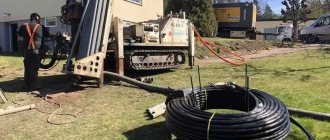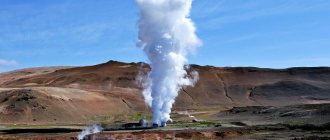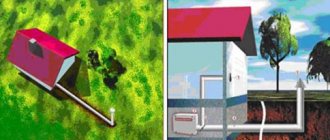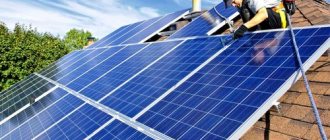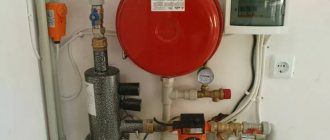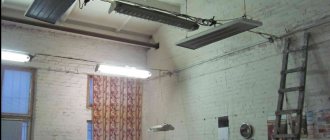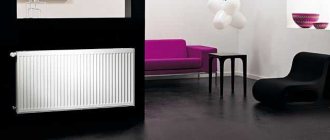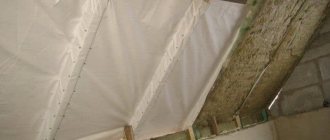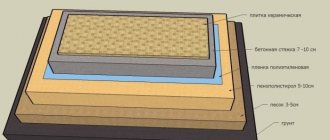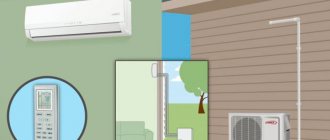This article was written based on reviews from real owners, as well as our practical experience in the Belarusian market. We have collected the main exciting questions that potential users ask themselves and tried to answer them as fully as possible, based on the experience of actually using heat pumps for heating.
Geothermal heating appeared in the Republic of Belarus relatively recently. The first installations were installed at the beginning of the 2000s, and at that time they were truly exotic, requiring the owner to have the courage to “believe” in this system and entrust it with such an important function as heating the house. Although systems based on heat pumps (HP) have been actively used all over the world since the 70s of the last century, and by now the technology has been fully tested and proven, our compatriots look with caution at modern “know how” and continue to “stoke » house with firewood, pellets and electricity.
This article contains the most common “fears” and concerns of people who are thinking about, but have not yet decided to equip their home with a heat pump.
“This is not for our climate!”
A very common statement, especially often heard from sellers of gas tanks, solid fuel and diesel boilers, when they are trying to “dissuade” a potential client who is looking towards alternative heating methods. Here you can simply cite statistics - in Sweden, a country with a climate very similar to Belarus, more than 80% of all new private houses under construction are equipped with “heat pumps”. And in Belarus, you can easily find houses that have been operating heat pumps for more than 5-7 years - our company has more than once organized such visits for doubtful clients.
A possible reason for such rumors may be the use of air-water heat pumps as the only source of heating, which is really only applicable for countries where the minimum temperature in winter does not fall below minus 15C. In our latitudes, heat pumps of this type are successfully used either for heating buildings for seasonal use in the autumn - spring period (dachas, summer recreation centers, etc.), or in conjunction with a classic heating system, which has to be used at temperatures below minus 15-20C.
It is important to note that all these shortcomings are completely free of systems based on HPs of the “Earth-Water” (“brine-water”) and “Water-Water” type, where the stability of operation does not depend in any way on the ambient temperature. HPs of this type can be the main and only sources of home heating and hot water supply.
Geothermal Heating: How It Works
The first houses heated by the heat of the Earth began to appear 50 years ago; today they can be found all over the world, from Canada to New Zealand.
The operation of the device, which uses the thermal energy of the subsoil, is based on the use of a reverse Carnot cycle, which describes circular processes of heat exchange. Such a thermodynamic system functions due to the temperature difference between its constituent parts; The principle has long been successfully implemented in refrigerators and air conditioners.
To start geothermal heating at home, you need to organize a system that will collect heat from the soil (or water) and transfer it to the heating circuit of the house. Underground heat is generated anywhere in the world, and geothermal heating is successfully implemented in Russia, for example, in the Moscow region. Interestingly, the circuit functions in such a way that it acts as an air conditioner in the summer and as a heating source in the winter.
The principle of a geothermal heating system Source eurobion.info
At a depth of six meters, a zone begins where the temperature remains stable all year round. It remains at the level of the average annual atmospheric temperature in a given area; in areas with a temperate climate it is +15°C, below it it grows. A circuit (heat exchanger) is used to collect underground thermal energy. This is a pipeline that is installed underground or underwater. To organize heating from the ground, the following methods are used:
- In a vertical well. An option suitable for small areas. Near the house, two geothermal wells of 80-90 m each are drilled, and a geothermal probe is placed in each. The heat pump raises the heated water, it passes through the heat exchanger and transfers heat to the internal circuit of the house. The vertical circuit has the highest energy efficiency and service life.
- With a horizontal collector device. The method is suitable for large areas. To get a properly functioning collector, using an excavator, prepare trenches 2-2.5 m deep, where HDPE (polyethylene) pipes are laid. The area of the site from which heat will be collected is commensurate with the area of the home.
Types of geothermal systems Source wsimg.com
- At the bottom of the reservoir. A horizontal collector (horizontal type probes) is installed at the bottom if the reservoir has sufficient dimensions (area and depth) and is located close to the house. The method also demonstrates good energy efficiency.
- Using antifreeze. A container filled with antifreeze is immersed to a sufficient depth (75 m or more). The heated liquid is lifted by the heat pump and releases energy to the heat exchanger, then returned underground for the next cycle.
See also: Catalog of companies that specialize in engineering systems (heating, water supply, sewerage and others) and related work
“A heat pump is very expensive!”
Indeed, a turnkey installation of a geothermal heating system in 2000-2010 cost about $30,000-40,000 . There were three main factors for such a high price:
- the cost of drilling work at that time was 35-50 USD. for 1 meter. As a result, 60-70% of the entire budget was spent on installing an external collector. Now, thanks to the crisis, the cost of drilling has dropped to 15-17 USD. for 1 meter.
- the price of heat pumps has now decreased significantly both due to increased internal competition in the Belarusian market, which has forced the appetites of local players in this market to “moderate”, and due to a global decrease in the cost of equipment of this type.
- wider introduction of “horizontal” collectors, the installation of which costs half as much as “vertical” drilling, and at the same time is not inferior to “vertical” collectors in efficiency.
As a result, today the average cost of installing a turnkey system (with all equipment and work) has decreased to 9,000-15,000 USD. At the same time, you no longer need to develop and approve the project in the Ministry of Emergency Situations, build “step-down” stations (for gasification), install a chimney, comply with fire safety standards, etc.
Varieties of external contour designs
The external circuit pipes can be positioned horizontally or vertically.
Horizontal method
Such a circuit is called a collector. Despite all its labor intensity, the horizontal method of placing pipes is the simplest, and therefore it can be carried out by the homeowner himself without the involvement of highly qualified specialists and special equipment. On average, 20 W of thermal energy can be removed from one meter of horizontal collector. The circuit can be constructed using one of two options:
Placement in the ground
The pipes of the circuit, which have the form of a coil, are laid in trenches below the freezing depth.
The distance between adjacent sections must be at least 0.7 m. The maximum length of the contour is limited to 150 m.
With a longer length, the hydraulic resistance of the pipeline will reach significant values, which will require the use of a more powerful pump. The profitability of the system will be significantly reduced.
If it is necessary to use several contours, their length must be the same.
The area allocated for a ground collector is usually quite large. On average, for every 100 sq. m of heated area has to use 240 square meters. m of land on which planting trees and placing buildings is not allowed (the entire area must be well lit by the sun).
Placed in a pond
If there is a body of water no further than 100 m from the house, the task of constructing an external contour is greatly simplified. The pipes can be placed directly on the bottom, without resorting to time-consuming and expensive excavation work. The circuit has the shape of a spiral, which helps reduce its hydraulic resistance. Due to the high thermal conductivity of water, as well as its mixing as a result of convection, the heat exchange process is more intense.
Any body of water with a sufficient area that does not freeze to its full depth even in the harshest winters is suitable.
During severe frosts, the depth of freezing of soil or surface water may exceed the average value. Therefore, when determining the depth of the reservoir, a margin of 20% should be provided in this regard.
Vertical
In this option, external circuit pipes are placed in wells. This design is called a probe.
The vertical method is used in the absence of a sufficiently large area necessary for the location of a horizontal collector, and also in the event that the site already has landscaping elements that one would not want to destroy.
The disadvantage of this technology is that it cannot be implemented independently: you will have to spend money on hiring a team of drillers with special mechanisms.
The wells have a diameter from 120 to 200 mm, and their depth varies from 20 to 300 m. The circuit itself is most often made of polymer pipes with a diameter of at least 32 mm. After immersing the probe, the well is filled with a composition that has high thermal conductivity, for example, bentonite. The service life of a well constructed according to all rules reaches 100 years.
An important advantage of the vertical design of the outer loop is higher heat transfer. Here it is on average 50 W/m. Of course, this doesn't always happen. The specific value depends on the type of soil, its moisture content and the volume of groundwater.
Geothermal energy itself is a renewable type, however, the volume of its consumption is not infinite. Geothermal heat pumps for heating are recommended to operate no more than 1800 hours per year. Otherwise, the rate of heat removal will so exceed the rate of thermal regeneration of the soil that some areas around the well may even freeze. This phenomenon can be accompanied by subsidence of individual layers, destruction of the outer contour and a number of other undesirable consequences.
To avoid overcooling of the soil, it is recommended to saturate it with heat with the arrival of summer by switching the heat pump to reverse mode (air conditioning) or using solar collectors.
Combined
This method can be considered a type of horizontal, but with a bias towards the “vertical” side.
A recess up to 5 m deep is made in the ground, into which several turns of the circuit are laid with earth added between them.
In this case, the pipeline has the form of a cylindrical spring. It takes up less space than a horizontal one, but can also be made in-house.
How much will electricity consumption increase?
It’s worth saying right away that heat pumps use electricity not for direct heating, but to operate a compressor, which “pumps out” (redistributes) low-grade thermal energy from the environment (soil, water, atmospheric air) and “pumps” it into the house. Accordingly, having consumed 1 kW of electricity, we receive 4-4.7 kW of thermal energy.
So for a house of 180-220 sq.m. , with good insulation, a 12 kW pump (taking into account the needs for hot water supply). During operation, this equipment will consume 3 kW of electricity. But it is important to understand that the pump never works around the clock. Depending on the outside temperature, the average operating time in winter is 5-7 hours a day. Thus, power consumption is 450-630 kW in the winter month and about 150-350 kW in the spring and autumn.
These calculations are very approximate and depend on the following parameters:
- area of the heated room;
- insulation of the house;
- the presence of forced general ventilation;
- glazing area (windows) and doors;
Differences in heat pumps by operating method
Brine-water pumps consume energy from the depths of the earth, for which they use drilling and inserting geothermal probes into the well. The power of such an installation is up to 16 kW; to increase efficiency, several units of up to 5 units are installed in series. Such a combination of modules consumes, in general, about 50 kW of electricity .
An air-to-water system collects energy from the air space and transfers it to fluids in a heating or heating circuit. Allows you to heat the liquid up to 65ºС, the limit value of the air temperature outside is -20ºС. To ensure heating in extreme conditions, electrical heating is provided.
A water-to-water heat pump is used to use an open type to collect energy from water and transfer it to a coolant. Such units with a stainless distribution tank and a power of up to 6 kW serve for a long period. An automatic control system will make it possible to effectively use the heat of non-freezing reservoirs.
Air-to-air pumps are used to heat the internal atmosphere of a room. In summer, such equipment will cool the air and make the temperature comfortable. Cascade units with a total power of up to 50 kW will be used for air conditioning large office and industrial premises.
Ground-water installations make it possible to efficiently heat both private homes and industrial workshops. Heat is collected from the bowels of the earth by drilling deep wells. A simplified option considers the surface horizontal laying of long-distance pipelines on a plot of land.
What happens if the electricity goes out?
In the event of a power outage, your home heat pump will eventually stop working... like any other modern heating gas, diesel or pellet boiler, which cannot operate without power from the control automation. The solution here is quite simple - an autonomous gasoline or diesel generator. At a cost of 200-300 dollars, this solution is the most optimal. h2 Emergency situations and breakdowns.
Any, even the most reliable equipment, can fail; no one is immune from this. What is really important is the time it takes for the service department to respond and fix the breakdown. Specialists of Nova Gros LLC travel to any point in Belarus within 24 hours, all main components and spare parts are stored in our warehouse.
Also, all HP produced by Stiebel Eltron have a built-in backup electric heater installed. It allows you to maintain an acceptable temperature in the building in case of compressor failure, freon leakage, damage to the external collector and other breakdowns.
Nova Gros LLC - Official service and warranty center of Stiebel Eltron
Connect with us
Connect with us
Conclusions.
Geothermal heating has long been transformed from “exotic” into an independent, actively developing direction. It makes sense for you to use it in the following cases:
Full automation – ease of use.
In the absence of a central gas supply, HP is the only completely autonomous method of heating a building that does not require regular maintenance and fuel supply (like gas holders, pellet or diesel boilers). Therefore, if you adhere to the “set it and forget it” principle, a heat pump is the ideal option for you.
All individual constants are programmed during commissioning; subsequently, the operation of the equipment is controlled automatically based on sensor readings of external and internal air temperatures, coolant temperature in the house, external circuit antifreeze temperature, pressure, etc.
In the user settings, you can set the desired temperature in the building yourself, as well as program it for certain modes: reducing the temperature during your absence (vacation, business trips), lowering the temperature by 2-3 degrees at night, etc. Full-function control via a smartphone is possible via the Internet.
Security and lack of approvals from the Ministry of Emergency Situations.
Since combustion processes in HP do not occur in principle, all associated risks disappear: fire, natural gas leaks, carbon monoxide formation, etc. Accordingly, there is no need to make and approve a project with the Ministry of Emergency Situations, install special forced ventilation and chimneys, or undergo annual inspections. control of inspectors of the Ministry of Emergency Situations. The equipment can be placed in any room for you - the noise from a running pump is no more than from a refrigerator.
Price.
As strange as it may sound, sometimes the costs of geothermal heating can end up being much lower than for classical systems. Of course, if you have a gas pipe laid down your street, and the financial factor is the main one for you, then you can give preference to a gas boiler. But if gas needs to be “pulled” 200-300 meters, a step-down station must be built, and design documentation must be prepared and approved for all this, then even the initial capital investment “gas” loses.
The cost of installing gas tanks, diesel and pellet boilers can be 15-20% lower, but this difference pays off in the first 2-3 years of use due to savings on fuel.
You can view the equipment “live” and ask any questions you may have in our office in Minsk. Call! (044) 765-29-58;.
Owner reviews
Reviews about geothermal heating at home are still few. In general, the reliability of the equipment does not cause any complaints, and there are no complaints about its quality. However, most residents of regions with cold climates note a discrepancy between the actual performance of the system and the design performance determined by the manufacturer or dealer through calculation.
On paper, everything looks beautiful and convincing, but in reality the coolant has to be heated with additional sources. In this case, even according to the most optimistic calculations, the payback period can increase to 15 years.
Heating with infrared rays is becoming more and more popular. An infrared lamp for heating a room differs from a heater in lower power, but nevertheless it can be indispensable for use for household needs.
You will find a classification of heating meters for apartments in this article.
